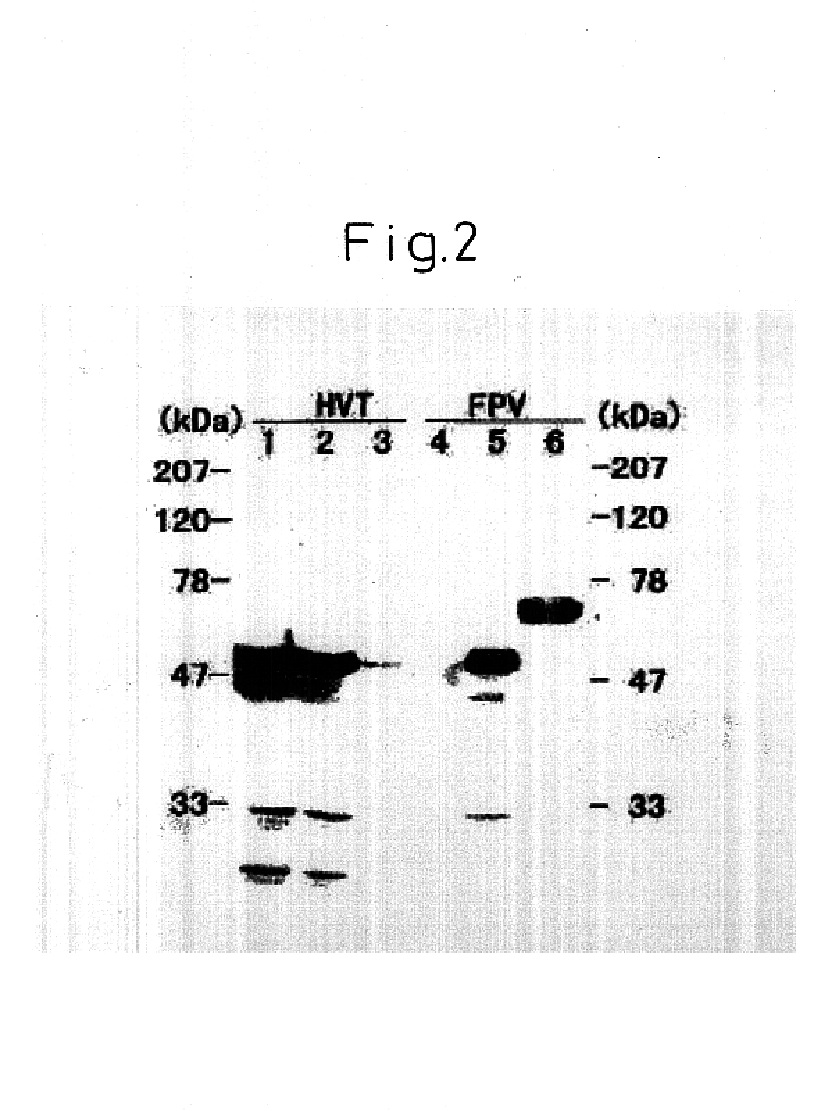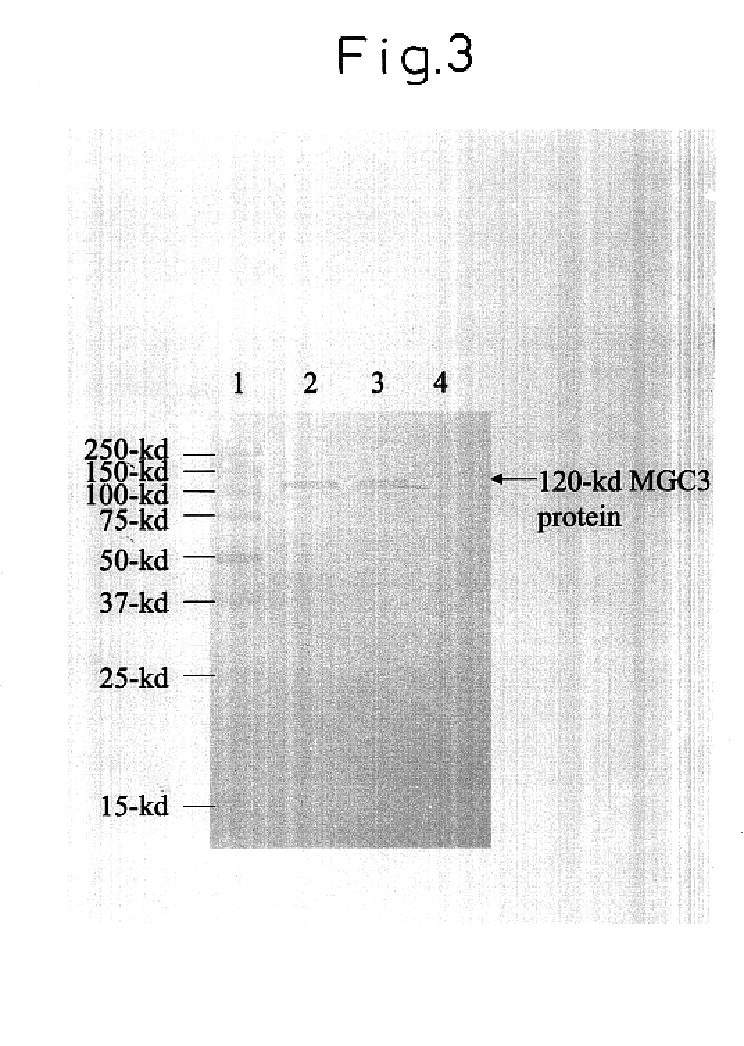Modified DNA molecule, recombinant containing the same, and uses thereof
a technology of dna molecule and recombinant, which is applied in the field of modified genes, can solve the problems that the fusion gene to which a signal-encoding dna is added does not always produce enhanced immunogenicity, and achieves the effect of strengthening the effect of protecting against infection
- Summary
- Abstract
- Description
- Claims
- Application Information
AI Technical Summary
Benefits of technology
Problems solved by technology
Method used
Image
Examples
reference example 1
Alteration of the MDVgB Signal
[0080]The DNA sequences corresponding to two N-glycosylation sites present in a 186 bp (62 amino acids) signal sequence of Marek's disease virus gB protein (MDV gb signal) were modified based on the above principle of alteration A, and DNA encoding the amino acid sequence (modified MDV gb signal) was obtained. The DNA was further modified based on the above principle of alteration B and C to obtain the MDVgB signal DNA (modified MDV gb-signal) in which the 30 nucleotide sequence was modified.
[0081]The modified MDVgB signal DNA was cloned into plasmid PCR-II (Invitrogen) to construct the plasmid PCR2-MDgB-CG. There are a BamHI site on the 5′-end and an EcoRI site on the 3′-end of the modified MDVgB signal DNA in said plasmid.
Refenence Example 2
Alteration of the Rabies gG Signal
[0082]DNA encoding the rabies virus gG signal (23 amino acids) (Rabies virus glycoprotien) G(gG signal) having no N-glycosylation sites was modified based on the above principle of...
example 1
Alteration of the TTM-1 Gene from MG
[0084](1) Construction of pGTPs40KS-Ngly
[0085]There are four N-glycosylation sites in the TTM-1 portion of the amino acid sequence as set forth in SEQ ID NO: 3 of a plasmid pNZ40K-S described in International Patent Publication W097 / 36924 in which a MDVgB signal-encoding DNA has been ligated to the N-terminal of the antigen gene TTM-1 derived from Mycoplasma gallisepticum. Since there are no N-glycosylation sites in the region from the EcoRI site, the start of the TTM-1 portion, to the BglII site 83 bp downstream, the portion downstream of BglII was modified based on the above principle of alteration A to obtain a plasmid pGTPs40KS-Ngly having an modified TTM-1 gene in which the sequence downstream to the BglII site has the nucleotide sequence (TTM-1 portion of the modified pNZ-40K-S (downstream of BglI) that corresponds to the amino acid sequence. The specific procedure to obtain this plasmid is as follows:
[0086]By using a synthetic DNA as a prim...
example 2
Alteration of the mgc3 Gene Derived from MG
[0097]The amino acid sequence as set forth in SEQ ID NO: 4 encoded by the mgc3 gene (GeneBank accession No. AB023292) as set forth in SEQ ID NO: 2 has 16 N-glycosylation sites. Among the 16 sites, since a site at the most 5′ upstream side is replaced with the signal sequence at a later treatment, it was excluded from the target of alteration. For the remaining 15 sites, the base sequence was modified based on the principle of alteration A to obtain the plasmid pM11BTR containing the mgc3 gene that has the nucleotide sequence (modified mgc3 gene (M11-BTR)) corresponding to the amino acid sequence (modified MG3g antigen (M11-BTR)).
[0098]The specific procedure to obtain this plasmid is as follows:
[0099]For the alteration, a synthetic DNA was used as the primer, and mutation was effected by PCR.
[0100]Since the mgc3 gene is as long as about 3 kb, it was divided into three fragments of about 1 kb in length, which were termed as the 1094 bp BKR re...
PUM
| Property | Measurement | Unit |
|---|---|---|
| temperature | aaaaa | aaaaa |
| pH | aaaaa | aaaaa |
| molecular weight | aaaaa | aaaaa |
Abstract
Description
Claims
Application Information
 Login to View More
Login to View More - R&D
- Intellectual Property
- Life Sciences
- Materials
- Tech Scout
- Unparalleled Data Quality
- Higher Quality Content
- 60% Fewer Hallucinations
Browse by: Latest US Patents, China's latest patents, Technical Efficacy Thesaurus, Application Domain, Technology Topic, Popular Technical Reports.
© 2025 PatSnap. All rights reserved.Legal|Privacy policy|Modern Slavery Act Transparency Statement|Sitemap|About US| Contact US: help@patsnap.com



